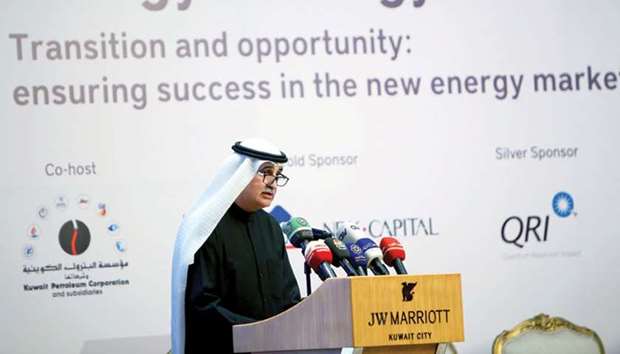Kuwait Petroleum Corp expects to spend over $500bn as it boosts its crude oil production capacity to 4.75mn bpd in 2040, the national oil firm said yesterday, outlining ambitious growth plans for the next two decades.
“KPC is expected to spend $114bn in capex over the next five years and an additional $394bn beyond that to 2040,” chief executive Nizar al-Adsani told an oil industry conference.
Kuwait’s current oil production capacity is around 3.15mn bpd.
It revealed the plan to lift capacity to 4.75mn bpd early last year.
The figure would exceed the current output of Iraq and Iran, Opec’s second and third biggest oil nations, whose production was 4.4mn and 3.8mn bpd respectively in December. Iraq and Iran plan to raise output steeply in the coming years to compete with Saudi Arabia, which produces around 10mn bpd and has capacity of over 12mn bpd.
However, Iraq and Iraq are running far behind their targets to expand output because of infrastructure constraints, red tape and in the case of Iran, the threat of Western sanctions.
The move by Kuwait to expand capacity signals a willingness among Opec producers to fight for market share in the long term as global oil demand rises and as the organisation faces competition from Russia and two fast-emerging oil superpowers, the US and Brazil.
Al-Adsani also told the conference that KPC intended to lift domestic oil refining capacity to 2.0mn bpd by 2035, while ensuring maximum offtake of domestic heavy oil production and taking into consideration the need to meet local energy demand.
KPC recently began a pre-feasibility study to lift refining capacity inside Kuwait by almost 300,000 bpd, he said without elaborating.
Capacity was estimated at 936,000 bpd in 2015, according to the US Energy Information Administration.
The company intends to expand into downstream derivative and speciality petrochemical products at facilities inside and outside the country, Adsani added.
Meanwhile, non-associated natural gas production in Kuwait is to increase to 2.5bn cubic feet per day in 2040, from 0.5bn cfd expected in April 2018 and 1bn cfd by 2023, al-Adsani said.
As part of efforts to reduce emissions of harmful gases, KPC’s future power plants will be gas-fired, although it will use renewable energy when that makes commercial sense, he added.

Nizar al-Adsani, deputy-chairman and CEO of KPC, gives a speech during the 2018 edition of the Petroleum Economist Energy Strategy Forum, in Kuwait City yesterday.


